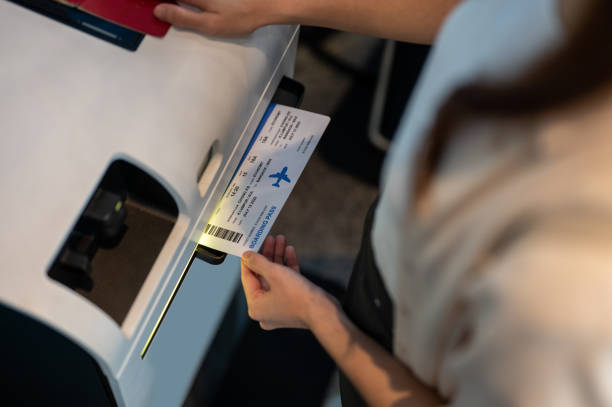A Guide to Using Your POS Printer for Order Tickets
Efficient service is the backbone of any successful restaurant, café, or quick-service business. One of the most effective ways to streamline communication between front-of-house staff and kitchen teams is by using a POS printer for order tickets. Gone are the days of scribbled paper slips or verbal handoffs that lead to confusion and delay. Modern order ticket printing solutions not only speed up the workflow but also increase accuracy and consistency. This guide explores how to properly use your POS printer for order tickets, from setup and customization to best practices for maximizing your team’s productivity.
Why Order Ticket Printing Matters
Order ticket printing ensures that customer orders are transmitted clearly and quickly to the appropriate preparation area. Whether you run a small coffee stand or a busy food hall, printed tickets allow kitchen staff to prioritize and fulfill orders efficiently. Unlike digital displays, printed tickets serve as a tangible and persistent reference that can be attached to food trays, pinned to prep stations, or archived for quality control.
The benefits extend beyond just operational speed. With order ticket printing solutions, businesses reduce errors caused by verbal miscommunication or unclear handwriting. A standardized ticket format helps ensure that every item, modification, and special request is captured and communicated precisely as intended. This results in fewer remakes, happier customers, and a more harmonious kitchen environment.
Choosing the Right POS Printer for Order Tickets
Not all printers are equally suited for ticket printing. When selecting a POS printer for your kitchen or prep station, consider factors like durability, print speed, paper type, and connectivity. Most food service businesses opt for thermal or impact printers, each with its own strengths.
Thermal printers are fast and quiet, ideal for high-speed environments. They use heat-sensitive paper and don’t require ink or ribbons. However, thermal paper is susceptible to heat and moisture, which can be a drawback in hot kitchen environments. Impact printers, on the other hand, use ink ribbons and are more resistant to kitchen conditions. Their printed tickets remain legible even when exposed to steam or heat, making them a solid choice for back-of-house printing.
Connectivity options include USB, Ethernet, Wi-Fi, and Bluetooth. Wired connections offer the most stability, while wireless options provide flexibility in positioning the printer. Choose a printer that integrates smoothly with your POS system and supports the format and functions you need for effective order ticket printing solutions.
Setting Up Your POS Printer for Order Tickets
Once you've chosen a suitable printer, the next step is to configure it within your POS system. Begin by assigning the printer to a specific station—such as kitchen, bar, or bakery—so that tickets are routed to the right place based on the type of item ordered. Many POS systems allow you to create rules that automatically determine which items go to which printers.
Install the printer using the recommended driver or setup utility provided by the manufacturer. Connect the printer via your chosen method—USB, Ethernet, or wireless—and perform a test print to ensure it's working properly. Within the POS software, access the printer settings and configure ticket layout, font size, spacing, and line breaks for readability.
You should also consider adding headers such as table number, server name, and order time to help kitchen staff organize their workflow. Using ticket templates, you can further customize the content and structure of printed orders. Some systems even allow you to include item modifiers or cooking preferences in bold or highlighted formats.
Ticket Design and Customization
Clear ticket design plays a key role in reducing kitchen errors. Too much clutter or unclear formatting can cause staff to miss key instructions. The best order ticket printing solutions offer customizable ticket formats that balance essential order information with readability.
Start with a clean layout that includes the customer name or table number at the top, followed by a list of items. Use separate lines for each item and indent modifiers like "no cheese" or "extra spicy" to make them stand out. Consider capitalizing modifiers or printing them in a different font if your printer supports it.
Use section headers for different order types, such as “Drinks,” “Mains,” or “Desserts.” If your POS allows conditional formatting, use it to apply visual cues like asterisks or underlines—to highlight allergy information or urgent items. Ensuring that each ticket includes a timestamp and order number helps with tracking and resolving any customer complaints or delays.
Multiple Printers and Station Routing
As your business grows, you may find that a single printer is no longer sufficient. Using multiple printers for different stations ensures that each team member receives only the relevant information they need to work efficiently. For instance, baristas receive drink orders while kitchen staff receive food orders, minimizing confusion.
Modern POS systems support item routing based on categories. You can assign breakfast items to a kitchen printer, desserts to a pastry station, and beverages to a bar printer. These order ticket printing solutions allow for real-time synchronization, so as soon as an order is entered into the POS, the correct printer receives the ticket without delay.
If you're using a mobile POS system with tablets, having printers stationed in different zones makes order management faster and more responsive. Just make sure each printer is labeled and placed in a location that’s easy for staff to access during peak service times.
Troubleshooting Common Issues
Despite their reliability, POS printers occasionally face issues that can disrupt service. One of the most common problems is paper jams or misfeeds. Prevent this by using high-quality paper rolls and ensuring they are installed correctly. Keep the printer clean, especially in kitchen environments where grease and crumbs can accumulate.
Connectivity issues can also arise, particularly with wireless printers. Ensure your network signal is strong and that the printer is within range of the router or access point. If your POS system suddenly stops sending orders to the printer, check for software updates or restart both the POS terminal and the printer.
Misprinted or unclear tickets often result from outdated drivers or incorrect template settings. Review your POS configuration and print a sample ticket whenever you make changes. Routine maintenance like updating firmware and replacing worn-out ribbons (for impact printers) helps keep your order ticket printing solutions reliable.
Best Practices for Using Order Tickets in Your Workflow
Implementing order ticket printing successfully involves more than just hardware. Train your staff on how to interpret and use printed tickets effectively. Encourage front-of-house employees to double-check order accuracy before submitting them to the kitchen. Kitchen staff should organize tickets by time received and mark off completed orders to avoid duplication or confusion.
Use ticket holders, rails, or clips to keep active orders visible and sorted. In high-volume environments, color-coded paper can help differentiate between dine-in, takeout, and delivery orders. Also consider printing a duplicate ticket for packaging areas or delivery dispatch to ensure consistency throughout the order fulfillment process.
Regularly review your ticket design and routing rules to adapt to changing workflows or menu updates. The more streamlined your process becomes, the faster you can serve customers and reduce errors, leading to improved satisfaction and repeat business.
Integrating Tickets with Online and Delivery Orders
As online ordering becomes more common, integrating these channels into your ticket printing setup is essential. Most modern POS systems offer integrations with third-party delivery apps or online platforms. When configured correctly, these systems send online orders directly to your kitchen printer in real time.
Ensure your ticket layout for online orders includes key information like customer name, delivery instructions, and platform used (e.g., Uber Eats or DoorDash). You can also use separate printers or paper colors for online orders to avoid mixing them with in-house orders. By aligning your digital and in-person workflows through order ticket printing solutions, your team can handle high volumes more efficiently.
FAQs
Can I use any POS printer for kitchen order tickets?
Not all printers are suitable for kitchen use. Impact printers are preferred in hot and humid environments because their output resists fading. Thermal printers may be better for quieter or front-of-house use.
How do I connect my POS printer to multiple stations?
You can use your POS system's routing features to send specific items to different printers. This setup requires assigning each item category to the appropriate station and printer within your POS settings.
What happens if the kitchen printer goes offline?
If a printer goes offline, some POS systems offer alerts or backup printing options. You can also designate a secondary printer to receive duplicate tickets in case of failure.
Can order tickets include modifiers and notes?
Yes, modern order ticket printing solutions allow you to print modifiers like “extra cheese” or “no onions.” These should be clearly formatted to avoid confusion in the kitchen.
Is it possible to print two copies of the same order?
Absolutely. Most POS systems let you configure the printer to produce duplicate tickets—useful for large kitchens, packaging stations, or quality control areas.
Conclusion
Using your POS printer for order tickets is one of the most impactful ways to improve speed, accuracy, and customer satisfaction in your service workflow. From selecting the right printer to customizing ticket layouts and integrating multiple stations, a well-implemented ticket printing system can elevate your entire operation. Whether you're running a small café or scaling a busy restaurant, dependable order ticket printing solutions ensure your team can deliver consistently high-quality service. For feature-rich, durable hardware that meets the demands of fast-paced kitchens, HPRT offers professional POS printers tailored to modern hospitality needs.
Author Bio:
Isaac Lin is a foodservice technology consultant specializing in POS and kitchen automation tools. He regularly partners with brands like HPRT to help hospitality businesses optimize operations through smart printing solutions. Visit HPRT to learn more about their latest printer innovations.

回答
まだコメントがありません

新規登録してログインすると質問にコメントがつけられます